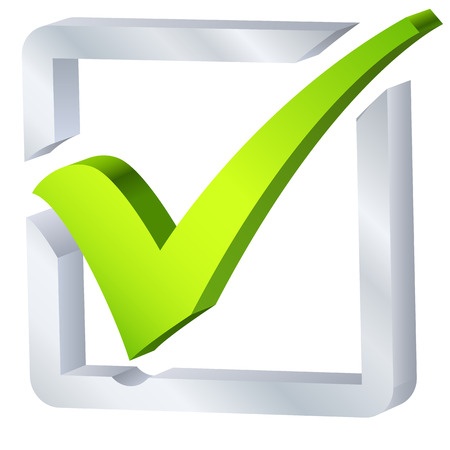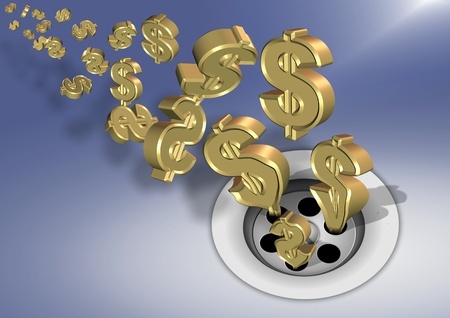Do you have questions about the Paycheck Protection Program? I've got answers.
Today we're talking about the Paycheck Protection Program, what it is, who it applies to, how can you apply, and every other question that you've got regarding this federal program. That is part of the CARES Act that was enacted into law last March 2020. Listen, I don't want to waste your time or my time, so let's jump into it.
Loan Terms
The first thing you need to know is that all the loan terms on this program are going to be the same for everyone who applies. Whether you're applying for $10,000 or $10 million, which incidentally is the cap. The loan terms are going to be the same. First thing you need to know, the loan amounts will be forgiven so long as, number one, you use the loan proceeds to cover payroll costs, mortgage interest, rent, or utility costs over the eight week period after the loan is given to you. Number two, your employee and compensation levels must be maintained.
In other words, you can't cut anybody's salary once you get the funds from this loan. A couple other general things that you need to know about this, payroll costs are capped at $100,000 per employee. If you make 150, you can only count $100,000 towards the calculation for how much money you're going to be able to apply for under this long program. Also, once you get the loan proceeds, no more than 25% of the loan proceeds can be used for something other than payroll. In other words, if you're going to use it to pay your rent, your utilities, something else like that, that's allowable under the program, it can't be more than 25% of the loan proceeds. Initially, the payments on the loans will be deferred for six months.
This is for everybody, this is not just certain small businesses or other big businesses, this is for everybody just so you know that.
Related Resource: Here is the resource we recommend for payroll. (affiliate link)
When Can You Apply?
Let's go over number one, when can you apply? Because these dates are different depending on the type of business you are. If you are a small business and a sole proprietorship, you can apply beginning on the first week of April 2020. So you can apply now if you want to. Now I will tell you, based on my experience, if you're interested in applying for this program, you need to have an established relationship with a business bank. If you don't have a business checking account somewhere with a bank, they're giving priority to the people that already have an established relationship with them. That's the place I would go to first and foremost to apply for these programs.
Who Can Apply?
There's two types of people that can apply into this program. There's the businesses and there's the self-employed individuals. Those are two different types of people. The April 3rd, 2020 date is for businesses, sole proprietorships. Sole proprietorship is somebody that has not formed a business entity, and then a small business is the business that actually has formed an entity like an LLC or an incorporation, and they're operating as a business. Beginning April 2020, independent contractors and self-employed individuals can apply for benefits.
If you are an independent contractor, you get 1099s, but you don't have any more 1099s coming in because the work has dried up, then you can also apply under this program, or if you're a self-employed individual, in other words. I'll be honest, I don't know what the difference is between a self-employed individual and a sole proprietorship. That's one of the many questions that come about when we're talking about this. But my understanding would be a sole proprietorship would be more like a business that's operating and they have not formed an entity. A self-employed individual would be somebody that's out there, a kid maybe who's in college that's mowing lawns to make some money during the summer months.
I don't know how else to explain it, I'm not quite sure what the distinction would be versus a sole proprietorship maybe is somebody who owns a landscaping company, but they'd never incorporate it, but they do have employees that are working for them. Does that make sense? Hopefully. Okay.
Where can you apply? I already touched on this, you're going to go through your business bank, but you can go through any SBA lender or through any federally insured depository location. But I would start with the bank that you've got a business relationship with. Who can apply? Any business can apply. You got to have less than 500 employees. Again, that's going to include nonprofits, veteran organizations, sole proprietorships, self-employed individuals, and independent contractors.
What Do You Need to Apply?
Here is a link to get a copy of the SBA loan application and you're going to need to fill that out. I would follow the directions from your banking institution for what they want. For my bank, in particular, they wanted me to fill it out a certain way and do an electronic signature. Other banks may have different requirements. So go to your bank, see what their requirements are, and use that.
What other documents do you need to include in your application? What my bank asked for and what you're probably going to be asked for if you decide to apply for this are my quarterly form, 941s. Those are the payroll returns that are submitted to the IRS that say how much that you paid in payroll and the taxes and things like that that went with it.
You may also need to provide your articles of organization or your articles of incorporation as well, or something that tells the bank that you have the authority to act on behalf of your business in requesting these loans. One of the requirements from the SBA previously was that you had to exhaust all avenues to look for loans from other places. That has been waived for this program, in particular. You do not need to look to other banks for loan proceeds before you apply to this program. The program, how long is it going to last? It will be open through the end of June 2020, however, everything I'm reading and what I've been told from other lawyers is that the funds are probably going to last through somewhere in May. So expect by the end of May 2020, the loan proceeds will probably all be gone.
Related Resource: Here is the resource we recommend for payroll. (affiliate link)
More Information About the PPP
It seems kind of silly, but yes, you can only take one loan under the program. If you take out a loan, you use all those funds for payroll, and then you go back to apply for another loan, that's not going to work. Although, I have also been told that Congress is already talking about extending this program and doing another round of financing later on. If, for some reason, you don't get in under this program or you need additional financing. What can you use the loans for? I've already alluded to this, but it's going to include payroll costs, interest on mortgage and obligations, provided the obligation was incurred before February 15th, 2020. Rent under lease agreements that were enforced that basically weren't existence as of February 15th.
Utilities for which service began prior to February 15th, 2020. Now when I say payroll costs, that there's a lot of ambiguity and confusion about what payroll costs are. It includes salary, wages, commissions, or tips. Again, capped at $100,000 per individual. Employee benefits, which could include things like group health care benefits, including insurance premiums and payment of any retirement benefits. State and local taxes assessed on compensation. What's interesting about this is it does not list federal taxes assessed on compensation. That seems to lead me to believe that they're not including that in how they're calculating the loans. Also, if you are a sole proprietor or an independent contractor applying to this program, wages, commissions, incomes, or net income, net earnings from self-employment, again capped at $100,000 are going to be counted as payroll costs.
Related Resource: Here is the resource we recommend for payroll. (affiliate link)
Does it cover paid sick leave? It does, it covers paid sick leave. How large can the loan be? The loan can be anywhere up to $10 million, but what they are using to calculate the amount that you're going to be eligible to receive is two months of your payroll expenses, plus an additional 25%. So that basically equates to two and a half times your monthly payroll expense for the last 12 months. How much of your loan will be forgiven?
It's funny, my wife and I have gone back and forth on this one. I told her I was applying for this program. She's like, “How do you know this loan's going to… This doesn't make any sense, blah, blah, blah.” All these things. The loan will be forgiven if you use the loan on payroll costs, mortgage interest, rent, utilities over the eight weeks after you get the loan.
Again, you can't use more than 25% on anything other than the payroll expenses. Also, if you use the money for… If you do not maintain the same number of staff and payroll that you had as of February 15th, 2020 then you may have to pay back the loan. If you reduce salaries, you may be on the hook for that. If you don't rehire, if you let people go after February 15th and you didn't rehire them before June 30th, then you may have to pay back the loan. How can you request loan forgiveness? You're going to submit a request to the lender that's servicing the loan. You'll have to verify the documents that include the number of full-time employees, pay rates, etc. That you'll have to basically provide them a bunch of information that shows that you did what you're supposed to do.
The interest rate on these loans is 1% fixed. Payments are deferred, as I mentioned before, for six months. The loan will be due in two years and you can prepay if you would need to pay. No collateral is required and you don't have to do a personal guarantee. There's a number of things that you're going to need to certify in good faith when you take out the loan application, and those are included on the loan application. Some of the things you have to certify are that current economics uncertainty makes the loan necessary to support your ongoing operations. The funds will be used to retain workers and maintain payroll or to make mortgage lease and utility payments.
You have not and will not receive another loan under this program. You will provide to the lender documentation that verifies a bunch of information. Loan forgiveness will be provided for the sum of the documented payroll costs. All the information you provided and all supporting documents is true and accurate. Knowingly making a false statement to get a loan under this program is punishable by law, and your lender will calculate the eligible loan amount using the tax documents you submitted.
If you want to learn more about some of the other programs that are available to you under the CARES Act, here's another video I did about that right over here.


